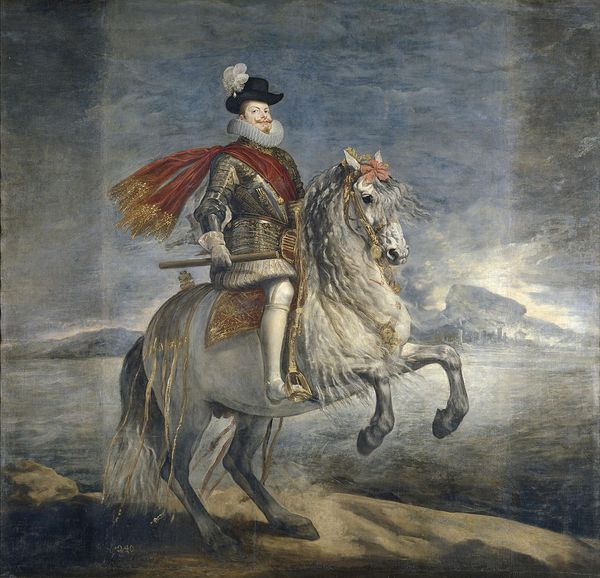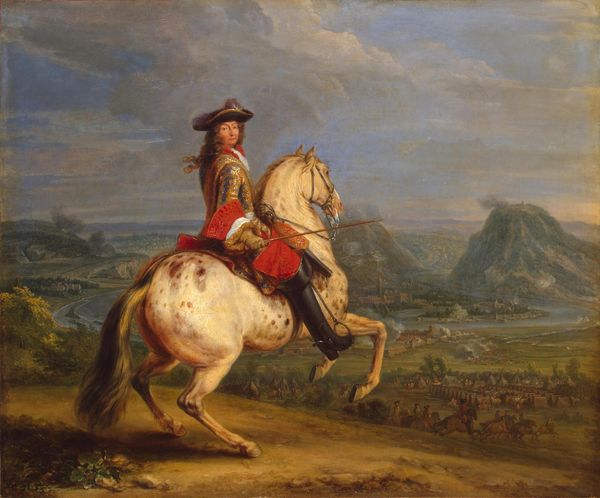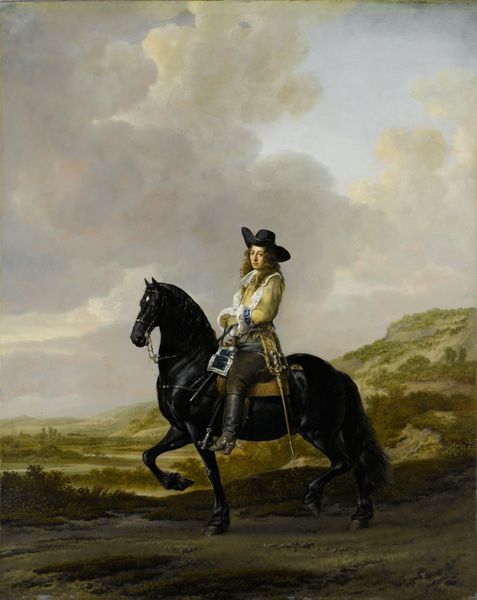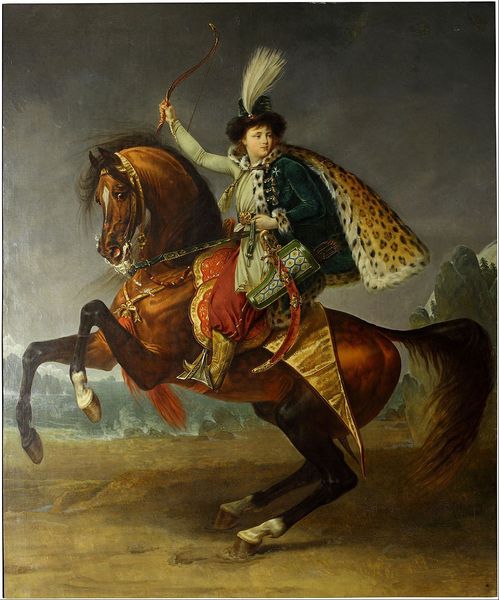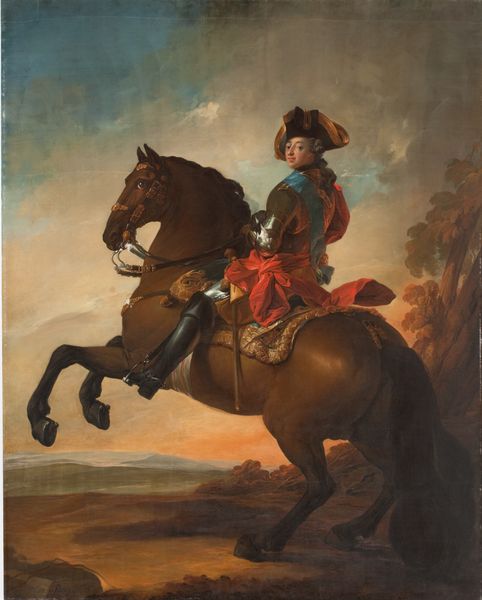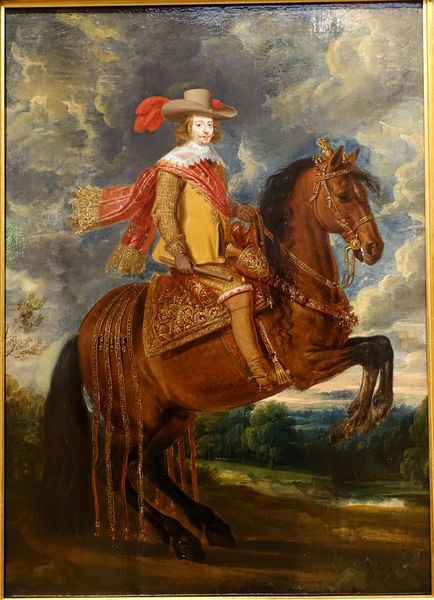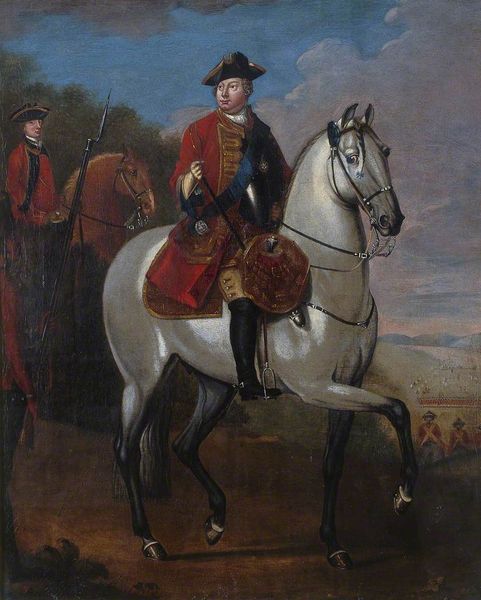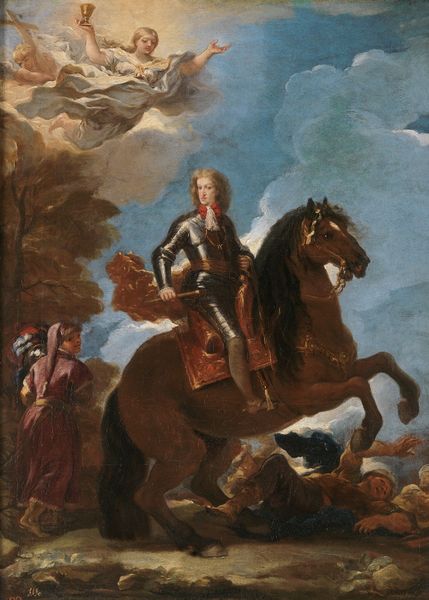
Dimensions: support: 2812 x 2357 mm
Copyright: CC-BY-NC-ND 4.0 DEED, Photo: Tate
Curator: What strikes me first about Reynolds' "Lord Ligonier" is the sheer performative aspect of it all—the billowing smoke, the proud steed, the unflinching gaze. It’s a theatrical assertion of power. Editor: The symbols, of course, are layered intentionally. The horse represents virility, dominance, and even a kind of noble savagery tamed by the rider, Ligonier. But the smoke? I wonder if it hints at something more complex than pure victory. Curator: Perhaps the transience of it all? Reynolds, born in 1723 and one of the leading portrait painters of his era, he knew how to immortalize someone, but I'm also struck by the man's expression. He’s present but distant, perhaps already contemplating the aftermath. Editor: And consider the sash, the hat, and the horse's tack—these aren't just decorative elements. They signify rank, honor, and the weight of responsibility. The image isn't just a portrait, it’s a carefully constructed narrative. Curator: It is. A narrative Reynolds knew well how to spin with a brushstroke. A dance with legacy, really. Editor: Yes, a story told in symbols, echoing across generations.

